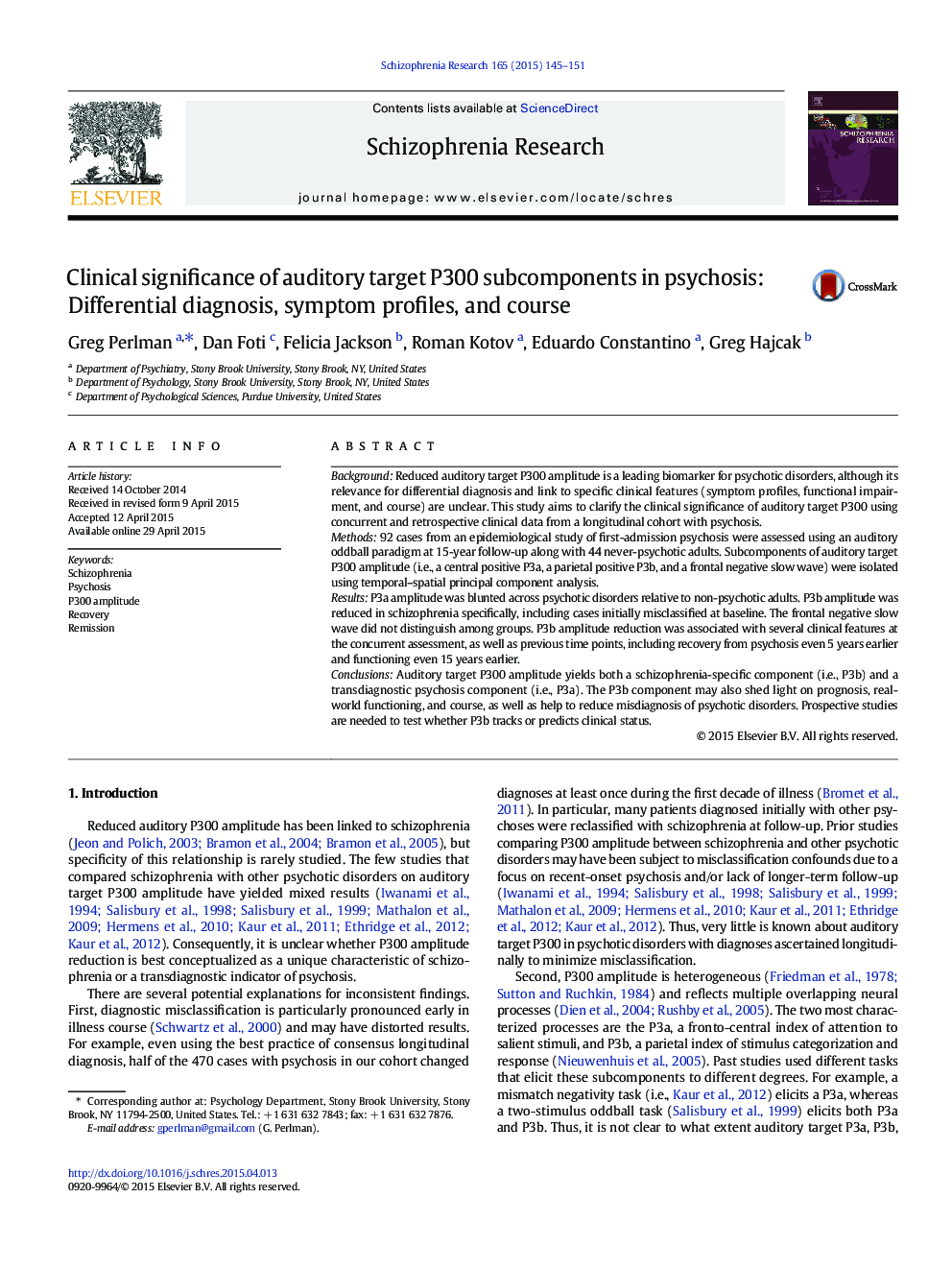| Article ID | Journal | Published Year | Pages | File Type |
|---|---|---|---|---|
| 341030 | Schizophrenia Research | 2015 | 7 Pages |
BackgroundReduced auditory target P300 amplitude is a leading biomarker for psychotic disorders, although its relevance for differential diagnosis and link to specific clinical features (symptom profiles, functional impairment, and course) are unclear. This study aims to clarify the clinical significance of auditory target P300 using concurrent and retrospective clinical data from a longitudinal cohort with psychosis.Methods92 cases from an epidemiological study of first-admission psychosis were assessed using an auditory oddball paradigm at 15-year follow-up along with 44 never-psychotic adults. Subcomponents of auditory target P300 amplitude (i.e., a central positive P3a, a parietal positive P3b, and a frontal negative slow wave) were isolated using temporal–spatial principal component analysis.ResultsP3a amplitude was blunted across psychotic disorders relative to non-psychotic adults. P3b amplitude was reduced in schizophrenia specifically, including cases initially misclassified at baseline. The frontal negative slow wave did not distinguish among groups. P3b amplitude reduction was associated with several clinical features at the concurrent assessment, as well as previous time points, including recovery from psychosis even 5 years earlier and functioning even 15 years earlier.ConclusionsAuditory target P300 amplitude yields both a schizophrenia-specific component (i.e., P3b) and a transdiagnostic psychosis component (i.e., P3a). The P3b component may also shed light on prognosis, real-world functioning, and course, as well as help to reduce misdiagnosis of psychotic disorders. Prospective studies are needed to test whether P3b tracks or predicts clinical status.
